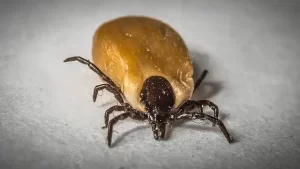NEJM: Why Leukemia is still diagnosed after gene therapy?
- Engineered Soybeans with Pig Protein: A Promising Alternative or Pandora’s Dish?
- Severe Fever with Thrombocytopenia Syndrome (SFTS): A Tick-Borne Threat with High Mortality
- Why Isolating Bananas Extends Their Shelf Life?
- This common vitamin benefits the brain and prevents cognitive decline
- New report reveals Nestlé adding sugar to infant formula sold in poor countries
- Did Cloud Seeding Unleash a Deluge in Dubai?
NEJM: Why Leukemia is still diagnosed after gene therapy?
- Red Yeast Rice Scare Grips Japan: Over 114 Hospitalized and 5 Deaths
- Long COVID Brain Fog: Blood-Brain Barrier Damage and Persistent Inflammation
- FDA has mandated a top-level black box warning for all marketed CAR-T therapies
- Can people with high blood pressure eat peanuts?
- What is the difference between dopamine and dobutamine?
- How long can the patient live after heart stent surgery?
NEJM: Why Leukemia is still diagnosed after gene therapy?
Sickle cell disease is a progressive genetic disease caused by point mutations in the β-globin gene, with high morbidity and early mortality.
The production and polymerization of sickle hemoglobin leads to sickling of red blood cells, and the clinical manifestations are chronic hemolytic anemia, vascular disease and vascular obstruction [1,2].
The current method of treating sickle cell disease is mainly receiving palliative treatment for life.
Allogeneic hematopoietic stem cell transplantation may be a potential treatment method .
However, due to lack of matched donors, immune complications, and transplant-related morbidity and mortality, the use of hematopoietic stem cell transplantation therapy is limited [3,4].
LentiGlobin (bb1111, lootibeglogene autotemcel) is a type of gene therapy.
After the gene encoding β A-T87Q -globin is transfected into the patient’s own hematopoietic stem cells (HSCs) through the lentiviral vector BB305 , autologous hematopoietic stem cell transplantation is performed.
After transplantation, red blood cells can produce anti-sickle hemoglobin (HbA T87Q ), and the proportion of abnormal sickle hemoglobin (HbS) is reduced.
LentiGlobin gene therapy plus autologous hematopoietic stem cell transplantation can avoid dependence on the donor and immune complications related to allogeneic hematopoietic stem cell transplantation .
Recently, Dr. Bonner’s team in the United States reported a special case in the New England Journal of Medicine: a 25-year-old sickle cell disease (βS/βS type) patient received LentiGlobin gene therapy in 2015, and was again treated 5.5 years later.
Diagnosed as a differential type of acute myeloid leukemia (AML, M0), and eventually died of disease progression and related complications [5].
We all know that gene therapy has a certain risk of cancer. So what is the truth about this patient suffering from leukemia?

Next, let’s take a look at how Bonner and others cracked this mystery.
Judging from the patient’s medical record, after the diagnosis, this female patient had been treated with hydroxyurea for a long time, but she still had repeated vascular occlusion crises, which led to frequent hospitalizations .
In August 2015 (25 years old), the patient was included in Group A of the HGB-206 cohort study and received the earliest LentiGlobin gene therapy.
Reinfusion of CD34 + hematopoietic stem cells (2.6×10 6 per kg body weight , of which CD34 hi HPSC is 1.5×10 6 per kg body weight , and the average vector copy number [VCN] per diploid genome is 0.57 copies).
On the 16th day after the treatment, the patient was treated with granulocyte colony stimulating factor due to fever, and neutrophils and platelets were transplanted 19 days and 31 days after transplantation.
After 6 months of treatment, the VCN per diploid genome in the peripheral blood was 0.05 copies, and HbA T87Q accounted for 4.33% of the total non-infused hemoglobin.
Symptoms such as hemolysis of sickle cell disease, vascular occlusive crisis, and chronic pain persist, so patients still need to receive hydroxyurea treatment and red blood cell transfusion.
This result shows that when the amount of genetically modified cells transplanted is low and the amount of transgene expression is low, the clinical benefit is minimal .

▲ Treatment characteristics and clinical characteristics after treatment
In December 2020, the patient was admitted to the hospital due to a vascular occlusion crisis. The Bonner team noticed that there were 2% blasts in the patient’s peripheral blood.
This is believed to be related to the recovery after infection. No blasts were found in the subsequent blood examination. Exist .
In January 2021, the patient developed neutropenia. In February 2021, the patient’s peripheral blood blast cells accounted for 29%, and bone marrow blast cells accounted for 22-50%.
The patient was diagnosed with differential acute myeloid leukemia (M0) .
The Bonner team analyzed the patient’s samples and found that there were RUNX1 frameshift mutations and PTPN11 missense mutations in the patient’s bone marrow cells, as well as chromosome 7 monomer and chromosome 11p partial deletions .
Further research found that 92.1% of peripheral blood CD34 + cells were lentiviral vector-positive, and bone marrow CD34 + cells accounted for 86.7% of lentiviral vector-positive cells.
Therefore, the researchers speculated that the patient’s acute myeloid leukemia may be related to the gene therapy she received.

▲ Vector expression in original cells
After the diagnosis of acute myeloid leukemia, the patient received three cycles of induction chemotherapy and achieved morphological remission, but the minimal residual disease was positive, and the original cells accounted for 0.2%.
In June 2021, the patient underwent haploid hematopoietic stem cell transplantation and was still positive for minimal residual disease.
The recurrence occurred 90 days after transplantation, the original cells appeared again in the peripheral circulation, and chemotherapy was given.
Eventually the patient died of disease progression and related complications.
In order to confirm the role of gene therapy vector insertion in the development of patients with acute myeloid leukemia, the Bonner team conducted a comprehensive study of this case.
First, they performed an integration site analysis and a total of 2,998 unique insertion sites were detected.
Among them, the insertion site of the vesicle-associated membrane protein 4 gene (VAMP4) increased over time .
By January 2020 (54 months after treatment), the VAMP4 insertion site will appear in approximately 1% of patients’ peripheral blood cells; by August 2020, this proportion will increase to 7%. At the same time, the peripheral blood white blood cell and absolute neutrophil counts decreased.

▲ Total vector copy number of peripheral blood (VCN)
The Bonner team noticed that in the HGB-206 study, most (25/35[71%]) patients treated with LentiGlobin had integration of the VAMP4 gene , and 14 sample integration sites, including AML patients, were located outside The intron region between exon 4 and exon 5.
However, none of the other patients in the study experienced adverse consequences such as cell proliferation .
Next, Bonner’s team analyzed the effect of the VAMP4 insertion site on transcription and found that the BB305 lentiviral vector had the lowest transcriptional activity in the original cells, and had no obvious effect on the expression of VAMP4 and surrounding genes, and no chromosomal abnormalities were observed.
Therefore, the occurrence of AML is probably not related to vector insertion.

▲ Gene expression in AML primitive cells
Based on the above conclusions, the Bonner team further explored the causes of AML.
Among the 7 patients in group A who received LentiGlobin treatment, this patient who died was actually the second patient to develop AML .
Therefore, the Bonner team turned their attention to other pathogenic factors in the two cases.
In these two patients, the Bonner team observed a similar mutation spectrum (RUNX1, PTPN11, and chromosome 7 monomer) , indicating that these two patients may have accumulated some mutations during the occurrence and treatment of sickle cell disease, causing They are easy to develop into acute myeloid leukemia .
It has been reported in the literature that the risk of sickle cell disease patients suffering from hematological malignancies is 2 to 11 times that of the general population [6,7].
Factors that may increase the risk include chronic hypoxia, reactive oxygen species production associated with related oxidative stress, chronic inflammation, endothelial and vascular damage [6,7].
In addition, the use of drugs such as hydroxyurea and busulfan can cause proliferative stress in the bone marrow microenvironment after the extensive proliferation of HSC and HSPC after myeloablization, which may lead to the increase and accumulation of mutations [8,9].
In the HGB-206 study, the intervention for patients in group A used the earliest technology of LentiGlobin treatment.
The dose of bone marrow cells collected by this method is low, and CD34 hi HSPC is low, which leads to increased proliferative stress.
In addition, the initial treatment is not effective, accompanied by continuous hemolysis and anemia, which provides an opportunity for further accumulation of mutations.
Therefore, the research team has improved this plan. So far, there have been no cases of malignant diseases in patients receiving the improved treatment plan .
This case report excludes the association between vector insertion and the occurrence of hematological malignancies after gene therapy, but the effect of transplant-mediated gene therapy on patients with sickle cell disease requires longer follow-up to assess.
references
[1] Kato GJ, Piel FB, Reid CD, et al. Sickle cell disease. Nat Rev Dis Primers. 2018;4:18010. Published 2018 Mar 15. doi:10.1038/nrdp.2018.10
[2] Sundd P, Gladwin MT, Novelli EM. Pathophysiology of Sickle Cell Disease. Annu Rev Pathol. 2019;14:263-292. doi:10.1146/annurev-pathmechdis-012418-012838
[3] Sheth S, Licursi M, Bhatia M. Sickle cell disease: time for a closer look at treatment options?. Br J Haematol. 2013;162(4):455-464. doi:10.1111/bjh.12413
[4] Walters MC, De Castro LM, Sullivan KM, et al. Indications and Results of HLA-Identical Sibling Hematopoietic Cell Transplantation for Sickle Cell Disease. Biol Blood Marrow Transplant. 2016;22(2):207-211. doi: 10.1016/j.bbmt.2015.10.017
[5] Goyal S, Tisdale J, Schmidt M, et al. Acute Myeloid Leukemia Case after Gene Therapy for Sickle Cell Disease [published online ahead of print, 2021 Dec 12]. N Engl J Med. 2021;10.1056/NEJMoa2109167. doi :10.1056/NEJMoa2109167
[6] Brunson A, Keegan THM, Bang H, Mahajan A, Paulukonis S, Wun T. Increased risk of leukemia among sickle cell disease patients in California. Blood. 2017;130(13):1597-1599. doi:10.1182/ blood-2017-05-783233
[7] Seminog OO, Ogunlaja OI, Yeates D, Goldacre MJ. Risk of individual malignant neoplasms in patients with sickle cell disease: English national record linkage study. JR Soc Med. 2016;109(8):303-309. doi: 10.1177/0141076816651037
[8] Cuthbert D, Stein BL. Therapy-associated leukemic transformation in myeloproliferative neoplasms-What do we know?. Best Pract Res Clin Haematol. 2019;32(1):65-73. doi:10.1016/j.beha.2019.02 .004
[9] Pagano L, Pulsoni A, Tosti ME, et al. Acute lymphoblastic leukaemia occurring as second malignancy: report of the GIMEMA archive of adult acute leukaemia. Gruppo Italiano Malattie Ematologiche Maligne dell’Adulto. Br J Haematol. 1999;106( 4):1037-1040.doi:10.1046/j.1365-2141.1999.01636.x
NEJM: Why Leukemia is still diagnosed after gene therapy?
(source:internet, reference only)
Disclaimer of medicaltrend.org
Important Note: The information provided is for informational purposes only and should not be considered as medical advice.



